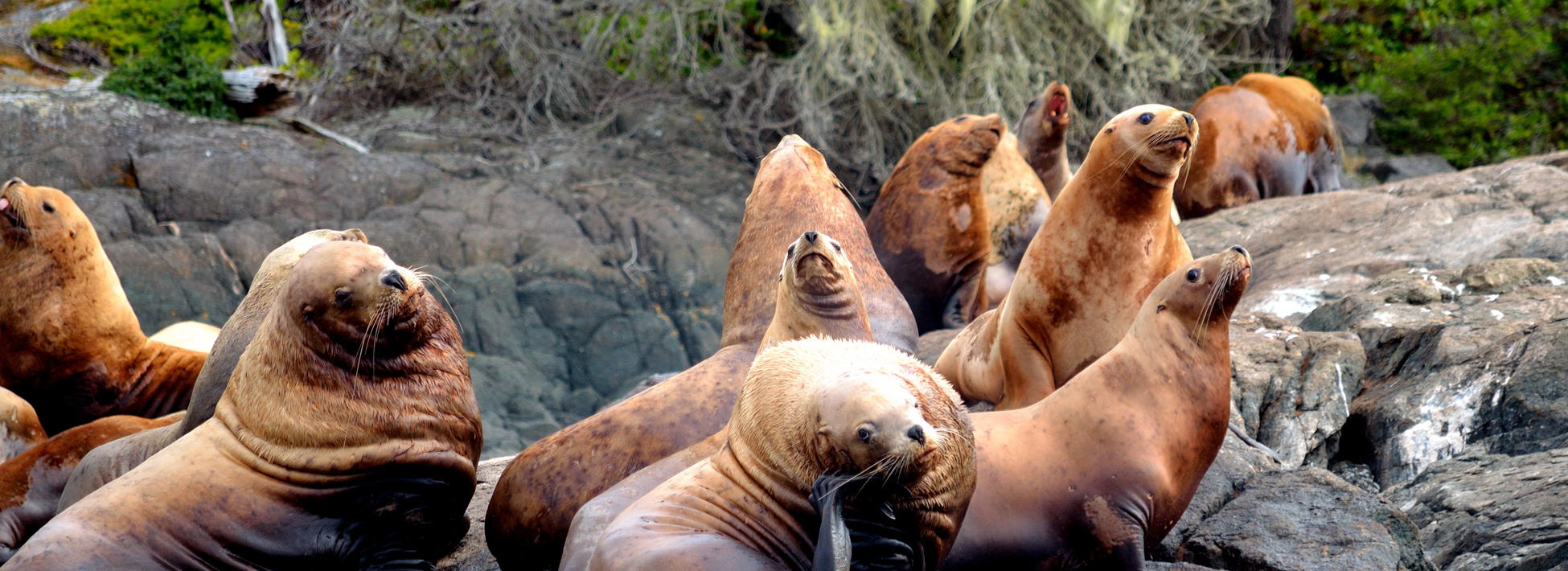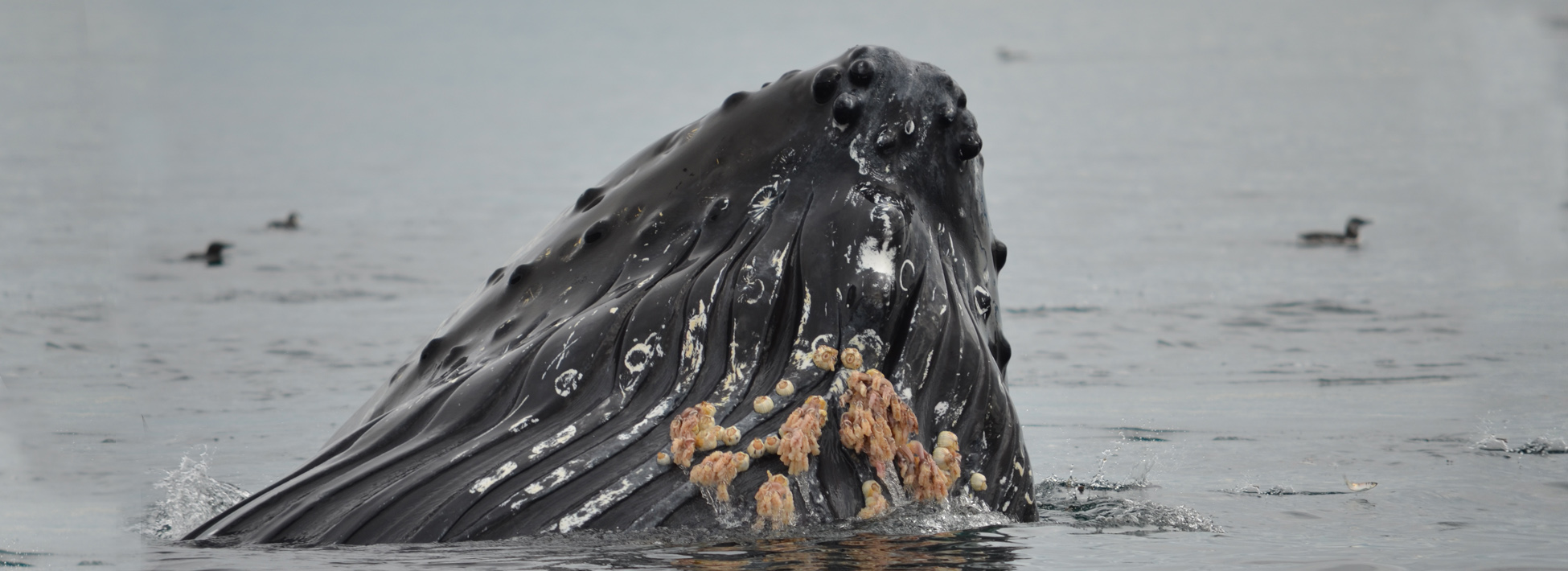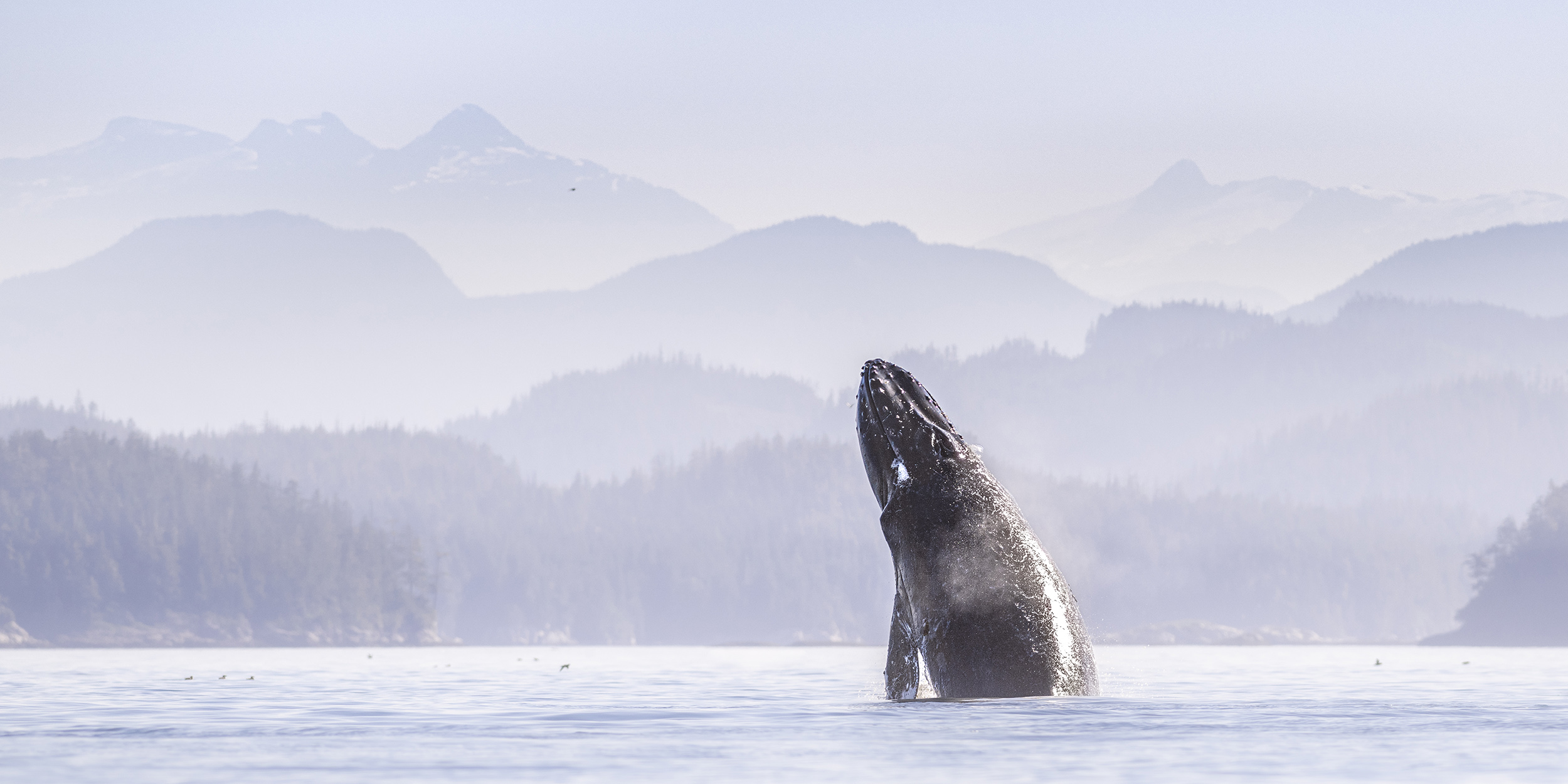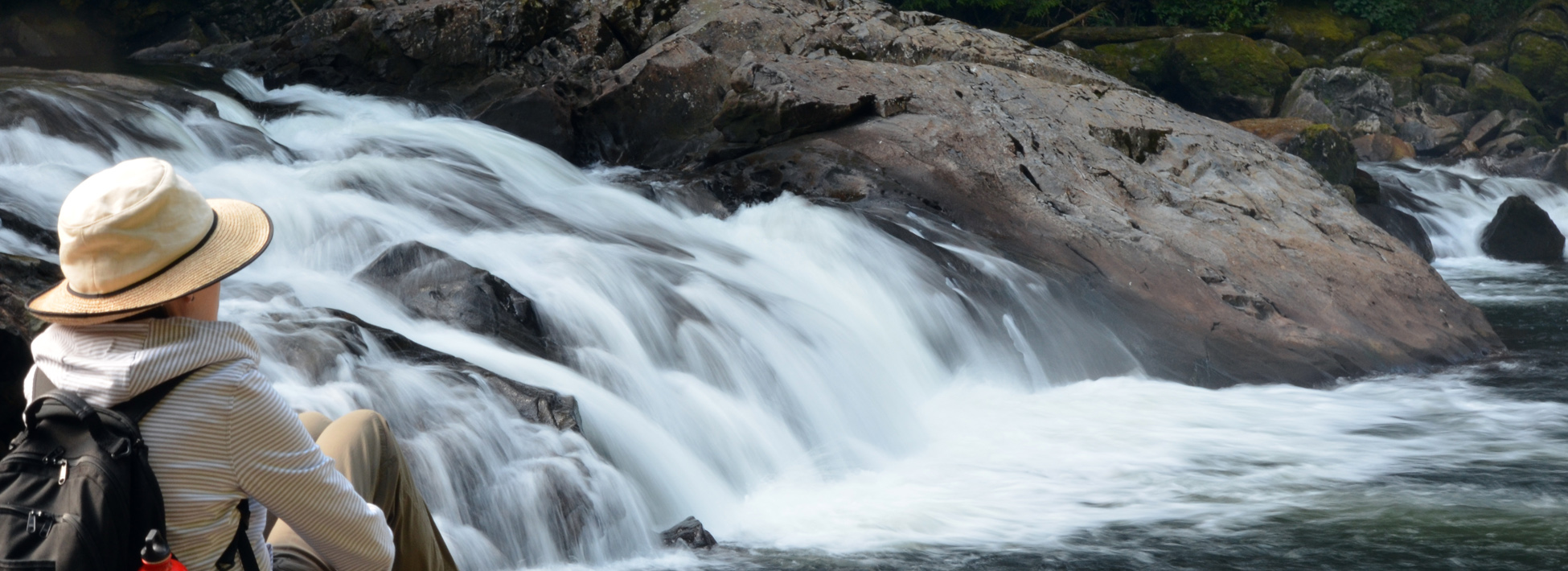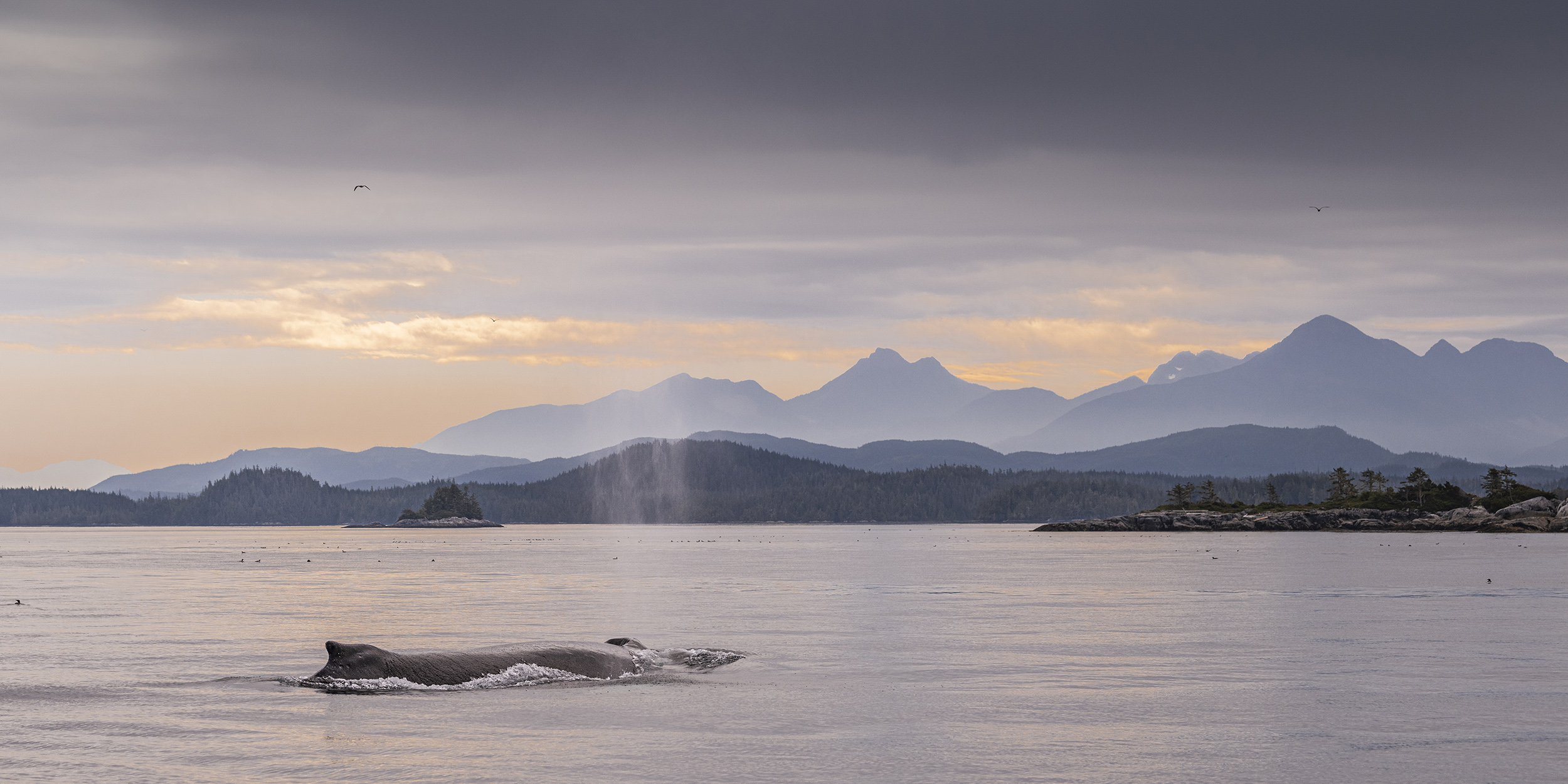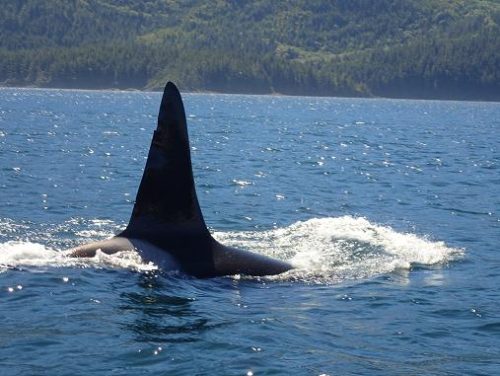 Transient orcas generally form smaller and more variable social groupings than residents, roam over a larger area of the coastal waters, and their appearance in particular places is not so predictable. They feed primarily on sea mammals such as seals and sea lions. The name “killer whale” probably stems from observations of transient orcas hunting. Transients are characterized by more triangular and pointed dorsal fins than those of Residents (because they have a broader base), and their saddle patch is generally solid.
Transient orcas generally form smaller and more variable social groupings than residents, roam over a larger area of the coastal waters, and their appearance in particular places is not so predictable. They feed primarily on sea mammals such as seals and sea lions. The name “killer whale” probably stems from observations of transient orcas hunting. Transients are characterized by more triangular and pointed dorsal fins than those of Residents (because they have a broader base), and their saddle patch is generally solid.
Bald Eagles

Bald Eagles are frequently sighted in our area. At times they can be seen in large numbers. This is usually where food supplies are high. For example this could be in areas with high concentrations of baitfish or along the rivers in the fall when the salmon are spawning. They are not migratory, but do move around with the food supply. As mentioned earlier when the salmon are spawning we often see many along the rivers, while there will be fewer along the coastline. With little need for camouflage their white head and tail feathers can be spotted easily. The female is slightly larger and her white head extends down a bit farther onto the body, but it is subtle. It takes these birds 4.5 – 5 years to acquire this unique plumage. As juveniles they are a brown colour. With exceptional eyesight and the ability to view 270 degrees they are understandably often seen in high perches and in trees near points and passageways.
Visit our Blog